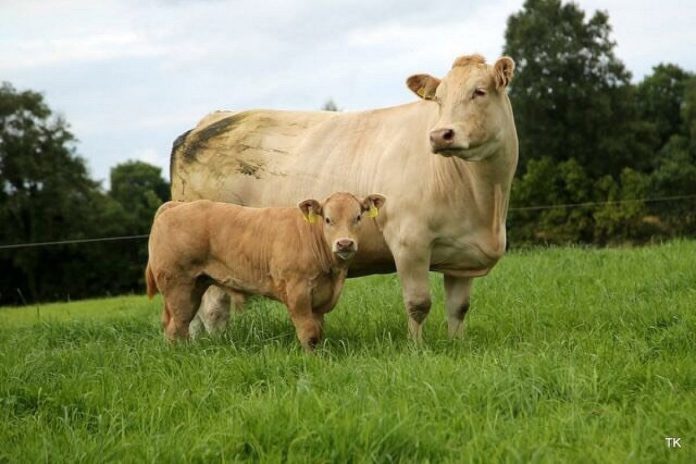Breeding is reported to be progressing relatively well, despite a challenging year for grass growth to date, writes Colm Kelly, B&T Drystock Adviser, Teagasc Galway/Clare.
The target breeding season window is 12 weeks with some of the more successful breeding herds shortening this target to 9 weeks. This is only made possible by a compact calving spread last spring.
The benefits of a compact calving period are proving to be substantial and cumulative for farmers which have worked hard on breeding over the last number of years. Benefits are not confined to the calving period but improve herd management over the entire 12 months of the year. As one farmer put it “I didn’t expect how much more streamlined it made my year, I can pretty much treat them all the same and no animal gets its performance compromised because it is out of sync with the rest”.
Closing the breeding season out:
- Cows bred on July 9th to a continental bull will be due April 21st assuming an average 286-day gestation. Be mindful there are variations depending on the genetics of individual bull & cow pairings.;
- All cows will hopefully have bred once by 6 weeks from the start of breeding. Cows should have started to cycle from 50 days post-calving. Any cow not cycling after 70 days post-calving, synchronisation will have to be considered. First calved heifers would be expected to cycle 70 days post-calving. Time is running out for earlier calving herds to synchronise non-cycling cows. Consult your vet if you have concerns about non-cycling cows and act sooner rather than later where there are issues.
- Have a cut-off point, three AI straws and cow is culled, or after 11-12 weeks breeding with the bull. If your calving pattern was very spread out previously, you may have to work towards the 12-week target over 2 breeding seasons depending on the number of cows involved.
- Avoid the temptation to use spring and autumn herds as a way to run cows from one season to another. This glosses over fertility issues and keeps poor fertility cows in the herd longer;
- In herds using AI, consider using short gestation sires for the final week on any repeats;
- Pregnancy can be detected by scanning from 35+ days post breeding. Consider scanning eligible cows to check on the stock bull’s effectiveness particularly if you haven’t been able to monitor cows cycling and repeats closely.
- If you have two bulls on the farm bulling two separate groups, rotate them for the final three weeks which will hopefully provide some insurance against sub-fertile bull issues;
- For herds breeding successfully, the target is to have less than 5% culled due to fertility issues within a defined breeding season. If your herd is trending with higher levels of repeating cows after the defined breeding season ends, there is likely underlying issues that need to be identified and addressed.
- Tail paint when using AI for peace of mind and ensure high activity animals are mixed in with cows such as bullocks. As more cows go in-calf, bulling activity reduces significantly and it is harder to pick up individual cows in heat.
Culling repeat offenders
Often culling repeat offenders can lead to significant improvements as one farmer told me “once the few are gone, it’s amazing how all the headaches with repeats seem to leave with them, in my experience, you make an exception for a cow she will let you down again, there is no shortage of breeding heifers in this country”.
Take the remainder of the breeding season to check cows at least twice-a-day early and late for bulling activity.
If the bull is out over six weeks and there is still a lot of bulling activity,then it is time to be concerned. Remember a bull can go sub-fertile due to picking up a temperature or injury so regardless of past performance issues can arise at any time.
Defined calving season advantages:
- Concentrate on calving for a shorter period of time leads to better organisation and reduces losses due to ‘calving fatigue’ at the tail end of calving;
- Earlier average turn-out date leads to reduced input costs;
- Improved live-weight sales;
- More efficient use of wormers, vaccinations, grass, concentrates and time.





